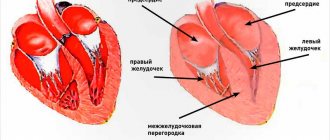6796Pavel
Viral leukemia in cats is a dangerous disease that affects their hemolymphopoietic system. Characterized by malignant enlargement of myeloid tissues. The cause is an oncogenic virus called FeLV or FLV. Although it is similar to leukemia viruses in other animals, there are still significant differences in the structure of the antigens. This disease affects cats all over the world, regardless of age, but in older animals the chance of infection is noticeably lower.
Classification
Leukemia (other names - leukemia, FLV (feline viral leukemia), FeLV (analogous to the abbreviation FLV in English literature) is a viral infection of the bone marrow of a cat. The disease is extremely contagious, and every animal has a risk of encountering it. But the disease can occur in in different forms, the degree of danger of the disease for the pet depends on this:
- Transitional. When confronted with the leukemia virus, cats with developed immune systems mount a powerful immune response. The virus dies, and the animal remains immune for life. Symptoms of the disease do not have time to appear or are similar to mild malaise. There is no danger to other animals.
- Latent. Occurs when the immune system is not strong enough to completely destroy the virus. The cat is not sick, but the virus circulates in the blood and is excreted in body fluids. This form can only be recognized by analysis. There is a risk of infecting other cats. The latent form can become transient (with treatment) or persistent (with weakened immunity).
- Persistent. The immune system is unable to fight the virus, and full-fledged symptoms of the disease develop. The animal is contagious to other cats, and the condition gradually worsens. The outcome of the disease is death. There is no cure on its own; therapy from a veterinarian is required.
The disease is also distinguished by the level of bone marrow damage. With thoracic leukemia, the sternum, ribs, and lymph nodes of the chest cavity are affected. Symptoms of damage to the lungs predominate, less often to the heart. In the abdominal form, the lymph nodes of the abdominal cavity, spleen, and liver are affected. The digestive tract, sexual function, urination, and kidneys are affected. The multifocal form affects tissues and organs in both areas.
Causes and conditions of occurrence
Leukemia in cats occurs under two conditions - infection with a virus and a weak immune system. The virus is contained in all secretions of a sick animal, but is unstable in the external environment. Outside the body, VLK can live no more than 2 days. In sunlight or dry weather, its lifespan is even shorter. Antiseptics, detergents and ultraviolet irradiation are effective in fighting the virus at home.
Infection of healthy cats occurs:
- through common household items;
- with bites and scratches in a fight;
- sexually;
- when sniffing the marks of other animals;
- during mutual licking;
- with bites of fleas and other blood-sucking parasites;
- in utero;
- iatrogenically (through veterinary manipulation);
- through the owner’s clothes if he has been in contact with a sick cat.
Risk group
Viral leukemia in cats is a rather insidious disease and some pets are at risk. The most susceptible to the disease are stray cats, mixed breeds, purebred, young and elderly pets.
The virus is unstable to external influences. It can be destroyed by treating with alcohol-containing disinfectants. It is also destroyed by the sun and sudden temperature changes.
"Note! Males, due to their lifestyle, suffer from leukemia more often than females. Therefore, veterinarians recommend that cat owners not let them roam freely and allow them to mate only with healthy females.”
Feline leukosis: symptoms
Viral leukemia is insidious in that its symptoms do not appear immediately after infection. The incubation period takes up to 4 months. The disease may become latent and not manifest itself. In both cases, the behavior and appearance of the cat does not change in any way; a slight malaise is possible, which is invisible to the owner.
The first symptoms of viral leukemia in cats are not specific and are similar to other diseases.
- The cat becomes lethargic, drowsy, loses interest in games, its temperature rises and salivates profusely. Owners usually mistake this condition for a cold. Sometimes relief comes and the animal feels better. Periods of deterioration and improvement of the condition alternate for up to a year, sometimes more.
- In parallel with the general deterioration of the condition, concomitant diseases arise. Despite the fact that the feline leukemia virus increases the number of leukocytes in the blood, it suppresses the animal’s immunity. The pet catches a cold and suffers from cystitis more often than usual, diarrhea and vomiting, and intolerance to certain types of food occur. The cat refuses his favorite food, his fur loses its shine and falls out.
- Upon careful examination, pallor of the mucous membranes is noticeable. You need to look at the mucous membrane of the mouth and the inside of the eyelids. If they become steadily and evenly pale, this is one of the reliable signs of VLK. The nose and paw pads contain pigments, so their color may not change.
- In the chest form of leukemia, the main symptom is shortness of breath. First it appears during physical activity, then at rest. Dyspnea in cats is manifested by rapid, shallow breathing, sometimes with the tongue hanging out. The main danger of thoracic leukemia is the accumulation of fluid in the pleural cavity, which leads to shortness of breath. Less commonly, pericarditis occurs with the accumulation of fluid in the heart sac. It also manifests itself as shortness of breath, the cat becomes lethargic, stops running and jumping on high surfaces.
- Manifestations of the abdominal form are varied. Most often these are various digestive disorders - diarrhea, constipation, blood and mucus in the stool, vomiting, refusal to eat. The most serious complications are dehydration and intestinal bleeding. They lead to the rapid death of the pet.
- Another dangerous variant of the abdominal form is glomerulonephritis. This is a lesion of the renal medulla. The ability of this organ to filter blood and produce urine is impaired. The color of the urine becomes red and its volume increases. Kidney damage such as pyelonephritis occurs against the background of frequent cystitis. The cat often goes to the toilet, excretes urine in small portions, and sometimes does not reach the litter box.
Is it possible to prevent viral leukemia?
Retroviruses are difficult to treat. Therapy will be successful if all cells in the animal’s body that are infected with FeLV are destroyed. This is almost impossible and leads to death. No medications have been developed that are effective against the leukemia virus; veterinarians prescribe symptomatic treatment.
Immunomodulators: Virbagen Omega, recombinant alpha-interferon, acemannan are “human” drugs, their action is aimed at improving the condition of a sick animal.
Cyclophosphamide, Vincristine - drugs for chemotherapy of lymphomas. The duration of treatment is 3-4 months, it is possible to reduce the size of the tumors; if possible, the tumors are removed surgically. Antibiotics are prescribed in case of development of secondary pathologies, but their treatment is ineffective and leads to relapses.
We suggest you read: Gum hyperplasia in cats treatment
Donor cats are immunized with a vaccine against feline leukemia, and subsequently their blood is administered to sick animals, this ensures passive injection of antibodies. Blood transfusion is prescribed for severe anemia, but it is dangerous due to impaired renal function and renal coagulation. Transfusions are often not performed, approximately once every 2-3 weeks, due to the slow formation of red blood cells in the red bone marrow.
Immunoprophylaxis is an effective way to avoid FeLV. You can vaccinate a completely healthy cat without being a latent carrier of the virus. Kittens begin to be given Pitman Moore, Fort Dodge, Merial, Solvay and Purevax FeLV vaccines at 10-12 weeks.
If a cat is vaccinated before the birth of kittens, the babies become immune to FeLV up to 2-3 months of life. After this period, they are vaccinated against feline leukemia.
The spread of the virus can be prevented by observing sanitary and hygienic standards for keeping animals in groups. Promptly isolate and treat patients, disinfect the premises and utensils. Domestic animals should not be allowed to come into contact with wild animals, especially in endemic areas.
During the course of the disease, in addition to changes in the circulatory system, cats also exhibit other signs of infection, both specific and nonspecific. Thus, in sick animals there is a significant deterioration in the general condition, decreased immunity, increased fatigue, active exhaustion caused by improper digestion, as well as difficulties in the activity of the heart and urethra.
Among the number of nonspecific signs that accompany leukemia in cats (symptoms and treatment are described in this section), it should be noted a noticeable increase in lymph nodes and the formation of tumors even in the most unexpected areas of the body. In addition, in some cases, there is bulging eyes and a significant excess of the permissible sizes of the spleen and liver.
How is leukemia treated in cats? Symptoms and treatment today cannot be balanced in a logical way, because a method for excluding the disease that is quite effective has not yet been developed. However, scientists have invented a vaccine, which is currently being tested for effectiveness through laboratory experiments.
It is important that leukemia is considered a combination of a number of diseases, in the structure of which there are a great variety of their forms: thymic lymphosarcoma, multiple lymphosarcoma, alimentary lymphosarcoma, lymphocytic leukemia and others. They are discussed in detail below.
Nevertheless, absolutely all elements of the above complex are endowed with a common feature: the relevance of uncontrolled cell division of the hematopoietic system. The etiology of the disease is explained by viral leukemia in cats, which is relevant when the animal organism is exposed to a retrovirus. This disease is classified depending on its pathogenesis into five stages, which have a certain duration.
For example, with an adequate immune response, the disease can be eliminated in 6-8 weeks, which corresponds to the second or third stage. The constant presence of the virus in the animal’s body at the fourth or fifth stage is usually observed after 4-6 weeks after infection. Sometimes this period can reach twelve weeks.
Diagnostics
Three blood tests help detect viral leukemia in cats:
- General analysis - reveals an increased number of leukocytes and a decrease in other formed elements. Informative in the later stages of the disease.
- ELISA – detects antibodies to the virus. Gives a positive result for any form of the disease, including transient.
- PCR – detects viral RNA in the blood. Informative for latent and persistent forms of the disease. The accuracy of the result depends on the number of pathogens in the blood.
In the persistent (most dangerous) form, all three tests will be positive, and clinical signs of deterioration will appear. In case of latency, ELISA and PCR will be positive (not always), general analysis without noticeable changes. A transient form is indicated by a positive ELISA result with a negative PCR, a normal general analysis and the absence of symptoms. Express tests are used to speed up diagnosis.
Negative tests in the presence of symptoms indicate a violation of the blood sampling procedure. Or that the animal is suffering from another disease.
If necessary, the veterinarian may order additional tests. Their task is to identify concomitant diseases and their severity.
Prevention
If your cat already has asthma, you may only be able to prolong periods of remission. Analyze yourself what could have caused the attacks: perhaps you made repairs and used paints and varnishes, or purchased a new perfume or household chemical, or you were given a bouquet of flowers. Typically, you will be able to link the development of asthma to the trigger and ensure that it no longer affects your pet's condition.
Try to keep your house free of dust and do wet cleaning regularly. Wash your cat's bedding, preferably using baby products or simply in very hot water. Do not smoke at home, get rid of flowering indoor plants, ventilate the room after using hairspray or perfume, and use a humidifier during the heating season.
Proper balanced nutrition and regular intake of vitamins will strengthen the immune system, and the cat will be less dependent on negative factors.
Treatment of leukemia in cats
It is impossible to fully treat leukemia. The virus is not destroyed, and the pet continues to suffer and release the pathogen into the environment. The goal of all therapeutic measures is to improve the cat’s condition, reduce the severity of symptoms, prevent the development of concomitant diseases, and prolong the life of the animal.
Pathogenetic treatment is aimed at strengthening the immune system. This is what determines the cat’s life expectancy and the risk of developing concomitant diseases. Drugs prescribed for cats:
- Interferons (Feliferon) are a drug that increases resistance to the virus.
- Drugs that reduce viral replication (Ragletvir) interfere with the reproduction of the virus.
Both types of medications reduce the danger of the virus to the cat's body. They reduce the viral load (the number of viruses in the blood) and the risk of infecting other pets. However, they cannot completely eliminate the virus and restore immunity. Cure is possible only with a latent form, but not always.
Symptomatic treatment is blood transfusion. Whole blood, red blood cells, leukocytes and plasma are used. This procedure temporarily improves the cat's condition. The normal ratio of formed elements is restored, but since the lymph nodes are affected, leukemia constantly returns.










